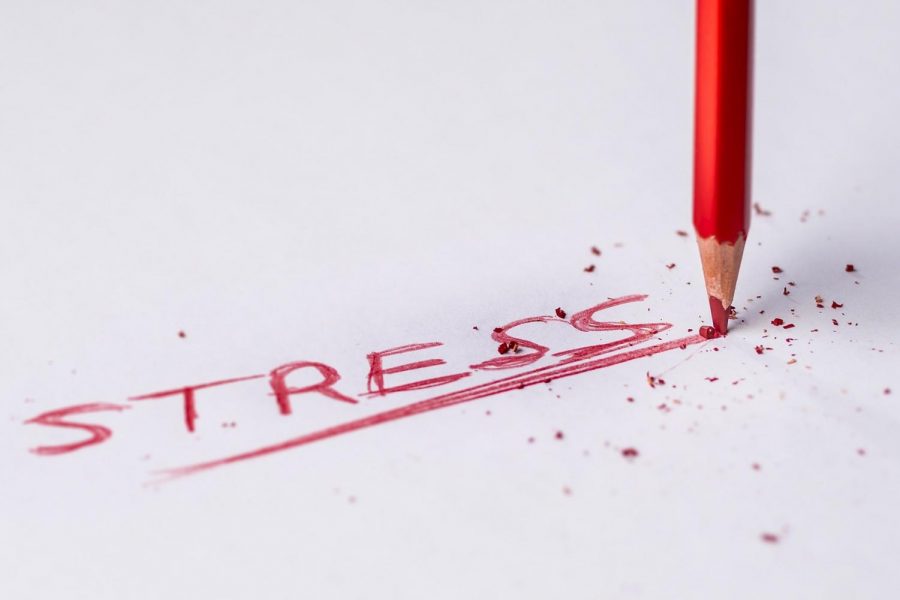Stress vs. Anxiety
October 31, 2021
Flashback to freshman year. I was chatting with a friend in the hallway about an upcoming math exam. She stated that she was feeling anxious about the test and I agreed with the sentiment. However, upon further contemplation, I realized that I wasn’t actually anxious. Nervous and a little stressed, sure, but not anxious.
At the time, I didn’t understand the difference between stress and anxiety and I used the terms interchangeably. Although these emotions can manifest in similar ways, their causes are different. Having a sufficient understanding of their variations can make both feelings more manageable.
Typically, stress is a response to an external cause, such as an exam or an argument with a parent. The feeling usually subsides once the conflict has been resolved.
Conversely, anxiety’s origin is internal. It is a persistent feeling of dread or apprehension and can outlast the event or conflict.
It can be difficult to distinguish between the two because they have similar symptoms.
Our bodies react to stress and anxiety the same way they do fear: by activating the flight or fight response. First, the amygdala in the brain signals the nervous system to prepare for a potential threat. The nervous system then causes the secretion of hormones such as adrenaline and cortisol from the brain to the rest of the body. This stimulates many changes to our circulatory system. Breathing becomes heavier, more blood is pumped out of the heart to ensure that our limbs are ready to run or attack, and heart rate increases. This activation of the body and mind can potentially lead to insomnia or difficulty concentrating. Additional symptoms include irritability, muscle tension, dizziness, and chest pain.
Low levels of stress and anxiety are normal. However, if symptoms do not cease once the ‘threat’ has been averted, this may be a sign of anxiety disorder.
Anxiety disorder is when the body’s response to anxiety is exaggerated. These disorders are not uncommon. According to the National Institute of Mental Health, 19% of Americans over the age of 18 had an anxiety disorder in the past year. Examples of anxiety disorders include panic attacks, obsessive-compulsive disorder (OCD), and post-traumatic stress disorder (PTSD). These can be treated through psychotherapy and medication.
Awareness of one’s emotions and limits can allow stress and anxiety to become manageable. Some lifestyle changes that may be beneficial in reducing symptoms include:
1) A fixed sleep schedule. Getting a sufficient amount of sleep consistently will ensure energy levels remain high and can help increase concentration (see this article for more information on how to fix your sleep schedule).
2) Exercising. Working out can improve your mood and keep you physically healthy. An outdoor walk or core workout can do wonders for your stress.
3) Cutting back on caffeine. Some studies show that caffeine can be linked to increased anxiety so it’s best to avoid excessive amounts of coffee.
4) Participation in relaxation activities. Taking a moment to pause and reflect may help calm your racing heart. Doing a short meditation or yoga before bed can ease your nerves and allow sleep to come more easily.
Although it can be difficult to distinguish between stress and anxiety, it is important to differentiate between them to determine when outside support may be necessary.
See this article for additional resources.








